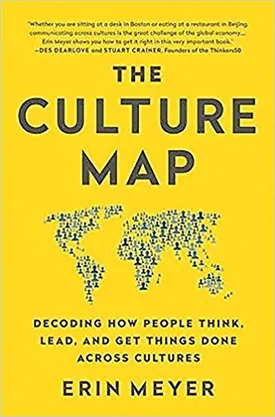Erin Meyer’s book, The Culture Map, explores the various ways the culture of an organization impacts the way its people communicate internally and externally. Meyer explains how these cultural differences can be bridged to improve effectiveness and to better understand potential problems.
In The Culture Map, Meyer reveals how our home country or culture can have a profound influence on us, both in terms of our beliefs, assumptions and values and also in terms of our behavior and communication style. Meyer defines culture as the “pattern of shared beliefs, values and assumptions held by the members of an organization that influences the way they interact, interpret and make decisions”. By understanding the different cultural influences, it is possible to appreciate potential misunderstandings and make necessary adjustments to avoid problems and create successful systems.
Meyer introduces her “Cultural Map” which is comprised of eight scales of cultural differences. These include communication style, expressiveness, assertiveness, confrontational tendencies, impact of time, documentation preference, acceptance of hierarchy and risk taking.
The first scale of communication style discusses how communication differences can be formulated by a person's country or culture of origin. She explains how cultures can vary in terms of whether to soften or be more direct. She also explains how a culture can impact the level of detail given in messages, the use of metaphors, humor, and the use of visuals.
The second scale, expressiveness, explains how cultural differences can affect the body language or vocal tones used in communication. It identifies specific patterns which vary from culture to culture and can have a massive impact on how a message is interpreted.
The assertiveness scale explains how different cultures may have different approaches to conflict and solving problems. She classifies cultures as rigid or flexible and shows how communication styles can range from assertive to passive.
The confrontational tendencies scale identifies how quickly a culture reacts to perceived threats or challenges and whether or not it prefers to challenge or just accept certain ambiguities.
The impact of time scale identifies the differences in the way different cultures view time and the importance of deadlines.
The documentation preference scale details how cultures view the need to generate formal documents and how they use written forms of communication.
The acceptance of hierarchy scale details how cultures value the chain of command in organizations and how this can affect communication.
Finally, the risk taking scale explains how cultures view risk and how they respond to it.
For those who are interested in cultural issues, The Culture Map provides an inside look into the various elements that can affect an individual’s communication style. It offers a comprehensive map of cultural differences and an in-depth breakdown of how these differences can affect an organization. Its insights are valuable for individuals and offer a starting point for organizations to explore their communication styles and create effective ways to bridge cultural gaps. It is also useful for those desiring to expand their workspace interactions or who are attempting to interact with people from other backgrounds. In short, The Culture Map is a useful tool for anyone hoping to understand cultural differences and improve communication.

